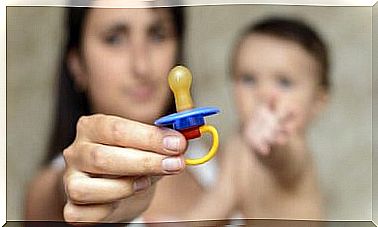The Contingency Contract Technique: How Does It Work?

On many occasions, children and teenagers behave in a way that is not appropriate. When they’re little, it’s because they don’t understand what’s wrong with what they’re doing, and when they’re teenagers, it’s to draw attention or sow chaos. These behaviors need to be changed and, for this, the contingency contract technique is very effective.
This technique can also be used in a classroom where chaos reigns, where there is no motivation on the part of the students and the teacher’s instructions are not respected.
Do you find it difficult to change some of your children’s inappropriate behaviors? The contingency contract technique can be useful because, in order to change behavior, we need to intervene. If you want to learn more about this tool, we recommend reading it.
What is the contingency contract technique?
This technique consists in drawing up an agreement or contract between several parties: it can be between one or more guardians (parents, teachers, etc.) and the person who is under their tutelage. This agreement specifies what desired behaviors are expected and, if met, positive reinforcement will be provided.

This technique would fit into the behavior modification techniques derived from classical and instrumental conditioning. Through it, we seek to change the inappropriate behaviors of children and adolescents through positive reinforcement.
What is positive reinforcement?
In operant conditioning, positive reinforcement is essential. It consists in giving a positive stimulus after a behavior or behavior that we want to establish. The reinforcer needs to be something the person likes and finds enjoyable. It could be something physical, such as an ice cream, a favorite food, a toy, or something emotional, such as a compliment or words of encouragement.
Before giving positive reinforcement, you need to know in advance which reinforcers are best for each person and this obviously depends on your tastes. What would motivate a teenager (going out with friends to a movie, sleeping a night at a friend’s house) is not the same as what would motivate a child (a toy, playing with parents, etc.).
Therefore, the reinforcer must be customized for each one according to their needs and tastes. The replenisher must be applied properly, otherwise it will not work. Therefore, it must be applied immediately and consecutively to the behavior. If it’s not done that way, it won’t work.
How to make the contingency contract?
The contract must be in writing and must be signed by both parties. It is important that this contract is an agreement between those involved, so that it is fair and not forced.
What are the ground rules that must be considered when making the contract?
- The behaviors we want to achieve must be clear and simple, so that they are understood by children and adolescents. For example: “Do your homework”, “Make the bed”, “Put the dirty clothes in the hamper”. We should avoid writing things like “Behave well”.
- Behaviors must be structured step-by-step so that they are easily understood by children and adolescents. For example: “Studying for the Portuguese test next week” in place of “Passing on all matters” .
- The consequences must be clear and we must focus on the positive reinforcement that will be received if the behaviors provided for in the contract are followed.
- Positive reinforcements should be enjoyable situations or objects for children and teenagers, and you should provide variety and consistency, depending on what has been achieved in relation to the behavior we are seeking. That is, if big steps are taken, the reinforcements will be greater than if the steps are small.
- It’s important to be consistent and have a commitment when applying reinforcements. If the behavior is met, there will be reinforcement, but otherwise there should be no reinforcement. This is essential for the technique to be effective.
- It is essential that children see that the contract is something serious and that it is respected, because otherwise they will see it as something unfair and will not take it seriously.

As for the technique of the contingency contract…
The contingency contract technique can be applied in many contexts: at home, in schools, in gyms… If this technique is controlled and applied properly, it will increase understanding between the parties to the contract and, in addition, it will also increase children’s motivation to change their behaviors.
Ultimately, the little ones will be responsible for their actions and will be more proud and self-confident when they receive reinforcements for having complied with the behavior stipulated in the contract.
If your child has any behavioral problems, you can use this technique, but if it doesn’t work, you should seek out a professional to receive personalized advice.









